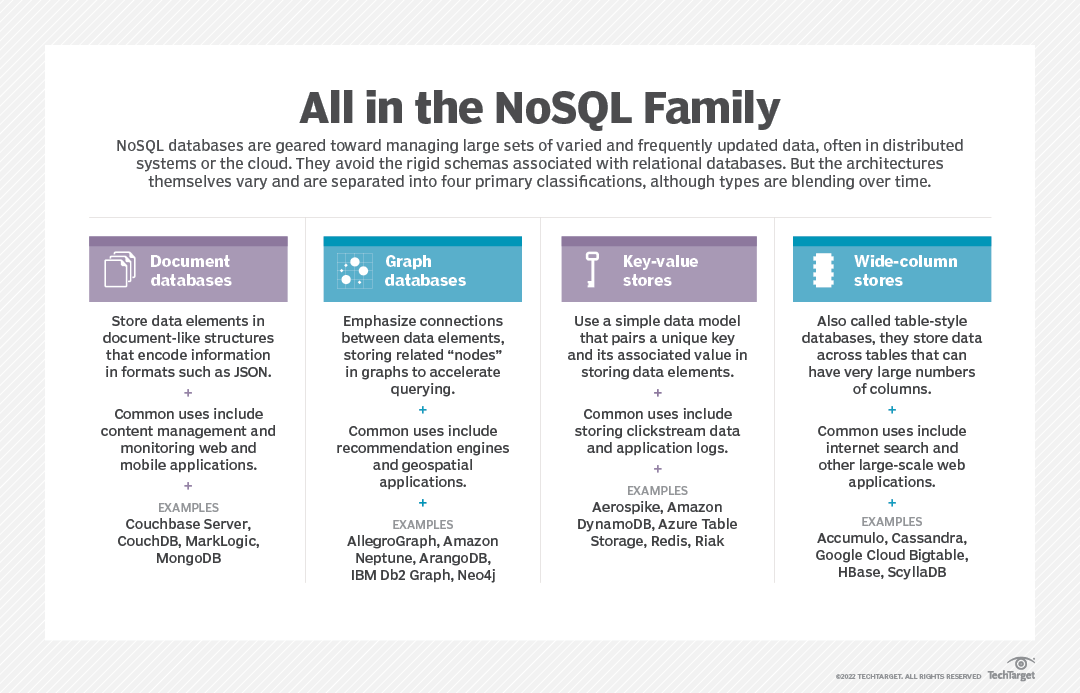Wednesday, June 20, 2018
NoSQL Database
What is NoSQL?
NoSQL is an approach to database design that can accomodate a wide variety of data models, including key-value, document, columnar and graph formats. NoSQL, which stand for "not only SQL," is an alternative to traditional relational databases in which data is placed in tables and data schema is carefully designed before the database is built. NoSQL databases are especially useful for working with large sets of distributed data.

NoSQL is an approach to database design that can accomodate a wide variety of data models, including key-value, document, columnar and graph formats. NoSQL, which stand for "not only SQL," is an alternative to traditional relational databases in which data is placed in tables and data schema is carefully designed before the database is built. NoSQL databases are especially useful for working with large sets of distributed data.
The Benefits of NoSQL
When compared to relational databases, NoSQL databases are more scalable and provide superior performance, and their data model addresses several issues that the relational model is not designed to address:
- Large volumes of rapidly changing structured, semi-structured, and unstructured data
- Agile sprints, quick schema iteration, and frequent code pushes
- Object-oriented programming that is easy to use and flexible
- Geographically distributed scale-out architecture instead of expensive, monolithic architecture
NoSQL Database Types
- Document databases pair each key with a complex data structure known as a document. Documents can contain many different key-value pairs, or key-array pairs, or even nested documents.
- Graph stores are used to store information about networks of data, such as social connections. Graph stores include Neo4J and Giraph.
- Key-value stores are the simplest NoSQL databases. Every single item in the database is stored as an attribute name (or 'key'), together with its value. Examples of key-value stores are Riak and Berkeley DB. Some key-value stores, such as Redis, allow each value to have a type, such as 'integer', which adds functionality.
- Wide-column stores such as Cassandra and HBase are optimized for que

Subscribe to:
Posts (Atom)